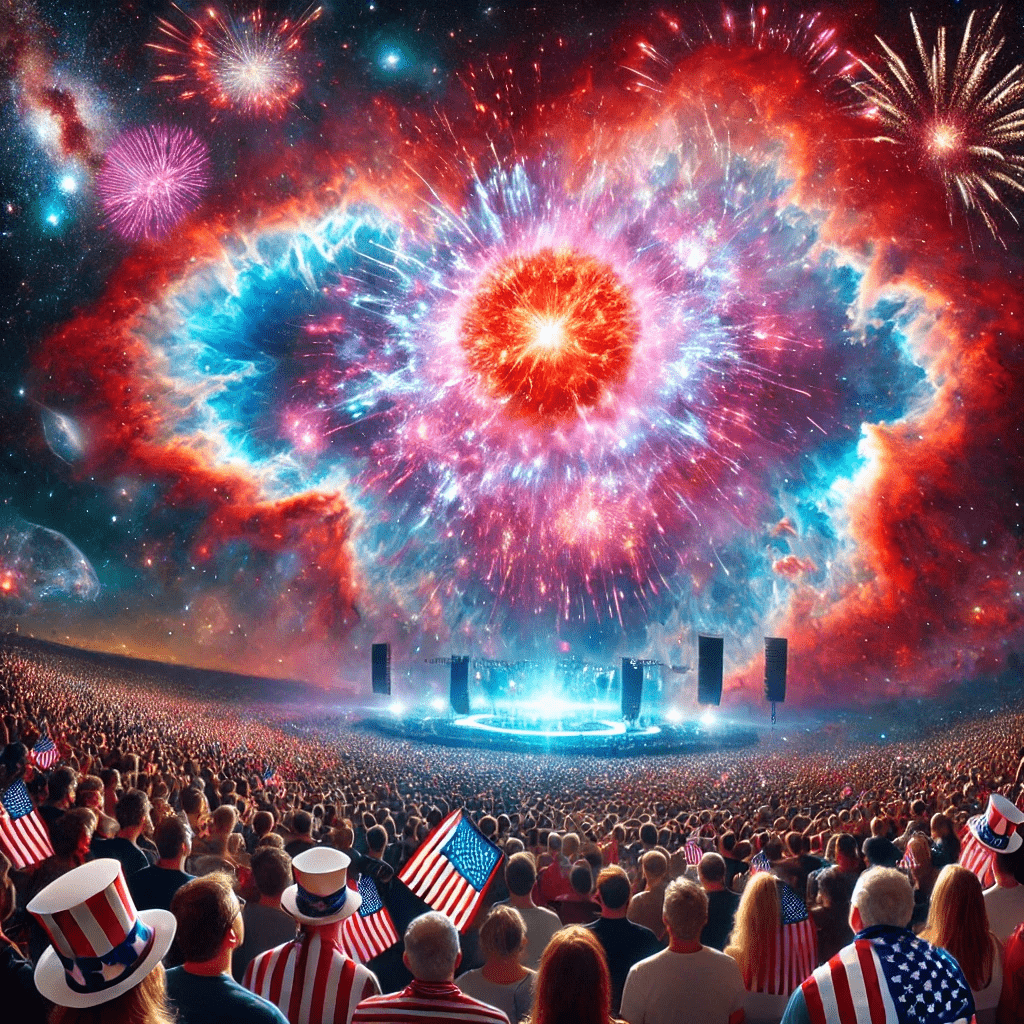4th of July: Infant Star Creates Red, White, and Blue Fireworks
Introduction: 4th of July and Cosmic Fireworks
On this 4th of July, as we celebrate Independence Day, we are treated to a spectacular celestial display captured by the James Webb Space Telescope (JWST). The image showcases the vibrant red, white, and blue fireworks of an infant star, perfectly timed to coincide with the holiday. This stunning image from JWST brings together the excitement of 4th of July celebrations and the awe-inspiring wonders of space.
The Celestial Show: A Cosmic 4th of July
The Infant Star and Its Nebula
- Location: 460 light-years away in the constellation Taurus
- Nebula: L1527
- Protostar Age: Approximately 100,000 years
The nebula L1527, home to this infant star, is located about 460 light-years from Earth in the constellation Taurus. The nebula resembles a cosmic butterfly with a glowing protostar at its center, estimated to be around 100,000 years old. While this might seem ancient compared to the 248-year-old United States, it’s still a baby in cosmic terms. Our own star, the sun, is over 4.5 billion years old.
The Protostar’s Transformation
The central body of the nebula is the protostar, still in the process of becoming a main sequence star like our sun. These cosmic fireworks represent the stages of its transformation.
- Formation Process:
- Born from molecular clouds
- Overdense patches gather mass
- Collapses under gravity to form a protostar
- Energy Source:
- Mass gathered until pressure and temperature trigger nuclear fusion of hydrogen to helium
The JWST’s Observations: Red, White, and Blue Fireworks
JWST’s Mid-Infrared Instrument
The JWST used its Mid-Infrared Instrument (MIRI) to capture this image. The white and blue lobes extending from the central region are outflows emitted in opposite directions as the protostar consumes gas and dust.
- Shockwaves and Bowshocks:
- Caused by outflows interacting with molecular gas
- Similar to the curved ridges of water from a boat’s passage
These shocked regions glow due to the energized gas, represented in blue, dominated by carbon-based molecules known as polycyclic aromatic hydrocarbons. The central region’s white glow comes from sporadic bursts of material from the feeding infant star, indicating a mix of ionized neon and thick dust.
Previous Observations
In November 2022, JWST observed L1527 with its Near-Infrared Camera (NIRCam). While this image was less patriotic, dominated by orange hues, it still showcased the red-hued central star and blue regions.
The Birth and Growth of a Star: Cosmic Independence
Stellar Formation
Stars form from vast molecular clouds, with protostars continuing to gather material until they ignite nuclear fusion. This process is responsible for most of the energy stars emit.
- Protostar’s Role:
- Harvests material from surrounding gas and dust
- Triggers nuclear fusion of hydrogen to helium
Impact on the Surrounding Region
The energetic jets and radiation from the growing star push away remaining molecular clouds, preventing other stars from forming nearby.
- Impact on Molecular Clouds:
- Disrupts and asserts independence
- Shapes the surrounding stellar nursery
Conclusion: A Beautiful Transformation
As the protostar in L1527 continues to mature into a main sequence star, it will consume surrounding matter and release jets and radiation. Eventually, the structures seen in the JWST images will fade away, leaving the clear image of a new star.
Celebrate 4th of July with Cosmic Wonders
This Independence Day, enjoy not only the fireworks on Earth but also the incredible display in the cosmos. The 4th of July marks a celebration of freedom and new beginnings, mirrored in the birth and transformation of a star. For more on the wonders of space, check out this NASA page.
References
- Source: Space.com
- Additional Reading: James Webb Space Telescope
By exploring the cosmos and celebrating 4th of July, we embrace the spirit of discovery and the excitement of new beginnings. Happy 4th of July to all!
To read more articles like this, visit: Regent Studies




